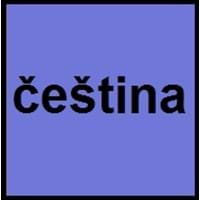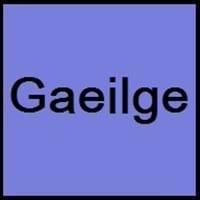Czech and Irish
Countries
Czech Republic, European Union
European Union, Ireland
National Language
Czech Republic
Ireland
Second Language
Not spoken in any of the countries
Ireland
Speaking Continents
Europe
Europe
Minority Language
Austria, Croatia, Germany, Slovakia
United Kingdom
Regulated By
Institute of the Czech Language
Foras na Gaeilge
Interesting Facts
- The Czech language was known as Bohemian as early at 19th century.
- In czech language, there are many words that do not contain vowels.
- In Irish language, there are no exact words for "yes" or "no".
- There are different set of numbers for counting humans and another set for counting non-humans in Irish Language.
Similar To
Polish, Slovak and Sorbian
Not Available
Derived From
Not Available
Not Available
Alphabets in
Czech-Alphabets.jpg#200
Irish-Alphabets.jpg#200
Writing Direction
Left-To-Right, Horizontal
Left-To-Right, Horizontal
Thank You
děkuji
Go raibh maith agat
How Are You?
Jak se máš?
Conas atá tú ?
Good Night
dobrou noc
Oíche mhaith
Good Evening
dobrý večer
Tráthnóna maith duit
Good Afternoon
dobré odpoledne
Tráthnóna maith duit
Good Morning
dobré ráno
Dia dhuit ar maidin
Please
prosím
le do thoil
Sorry
litovat
Tá brón orm
I Love You
Miluji tě
Is breá liom thú
Excuse Me
promiňte
Gabh mo leithscéal
Dialect 1
Chod
Connacht Irish
Where They Speak
Chodsko, Bohemia
Connacht
Dialect 2
Lach
Munster Irish
Where They Speak
Czech Silesia, Hlucin, Northeast Moravia
Munster
Dialect 3
Moravian
Ulster Irish
Where They Speak
Czech Republic, Czech Silesia, Moravia, Slovakia
Ulster
How Many People Speak
Not Available
Speaking Population
Not Available
Second Language Speakers
Not Available
Native Name
čeština / český jazyk
Gaeilge (na hÉireann) / An Ghaeilge
Alternative Names
Bohemian, Cestina
Erse, Gaeilge, Gaelic Irish
French Name
tchèque
irlandais moyen
German Name
Tschechisch
Mittelirisch
Pronunciation
Not Available
[ˈɡeːlʲɟə]
Ethnicity
Czechs
Irish people
Origin
9th Century
c. 750
Language Family
Indo-European Family
Indo-European Family
Early Forms
Proto-Czech, Old Czech
Primitive Irish, Old Irish, Middle Irish, Classical Irish, Irish
Standard Forms
Standard Czech
An Caighdeán Oifigiúil
Language Position
Not Available
Signed Forms
Czech Sign Language
Irish Sign Language
Scope
Individual
Individual
ISO 639 6
Not Available
Not Available
Glottocode
czec1258
iris1253
Linguasphere
53-AAA-da
50-AAA
Language Type
Living
Living
Language Linguistic Typology
Not Available
Verb-Subject-Object
Language Morphological Typology
Fusional, Synthetic
Fusional
All Czech and Irish Dialects
Most languages have dialects where each dialect differ from other dialect with respect to grammar and vocabulary. Here you will get to know all Czech and Irish dialects. Various dialects of Czech and Irish language differ in their pronunciations and words. Dialects of Czech are spoken in different Czech Speaking Countries whereas Irish Dialects are spoken in different Irish speaking countries. Also the number of people speaking Czech vs Irish Dialects varies from few thousands to many millions. Some of the Czech dialects include: Chod, Lach. Irish dialects include: Connacht Irish , Munster Irish. Also learn about dialects in South American Languages and North American Languages.
Czech and Irish Speaking population
Czech and Irish speaking population is one of the factors based on which Czech and Irish languages can be compared. The total count of Czech and Irish Speaking population in percentage is also given. The percentage of people speaking Czech language is 0.15 % whereas the percentage of people speaking Irish language is Not Available. When we compare the speaking population of any two languages we get to know which of two languages is more popular. Find more details about how many people speak Czech and Irish on Czech vs Irish where you will get native speakers, speaking population in percentage and native names.
Czech and Irish Language Codes
Czech and Irish language codes are used in those applications where using language names are tedious. Czech and Irish Language Codes include all the international language codes, glottocodes and linguasphere.





